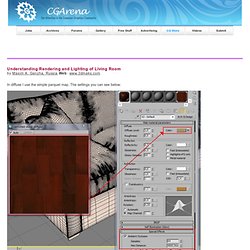

Download Free HDRI Maps. Effects of HDR vs MDR on Image Based Lighting. When attempting photo-real CG renderings using high dynamic range images (HDRI) with image-based lighting (IBL), you need an accurately photographed environment that contains the full dynamic range available. One of the main benefits to using IBL is the 'drag and drop' nature of it - you load your environment HDRI and render, almost instantly giving you highly realistic lighting. Before carrying on about this topic, (full disclosure) I'm a photographer of HDRIs at Hyperfocal Design - however this applies to any and all HDRIs. Unfortunately, some HDRIs are often barely higher in terms of range than an LDR (Low Dynamic Range Image/8 bit depth/Jpgs etc). Even if the dynamic range is good, but not great (you could call them "Medium Dynamic Range Images" or MDRI). You can end up with bad colour casting, as your renderer will grab some dull, white light from the tiny sun, plus loads of bright blue sky, and apply that to your scene's lighting in an unbalanced and unrealistic manner.
Light colour. 3ds max 2014 - Mental ray IBL and FG. Introduction In this video for 3ds max we’ll explore more in depth some new 2014 features and we’ll talk about Final Gather technology to be used as global illumination solver.

What we’ll do Global illumination can be calculated with Mental Ray in different ways. Since years it is possible to use Final gather to simulate GI in a fast way obtaining nice and smooth results. Using HDRI maps with Skylight sources can be a good way to simulate realistic lighting but GI shadows quality is poor. Linear Workflow: a guide. This has been the subject of discussions on many forums over recent years.

I realised that there were all sorts of tutorials offering often conflicting information regarding the process. This is not the only way, just my way. I would like to thank my mate Ben Cowell and Phil Shoebottom for offering some clarity on a few points. SO, WHAT IS LINEAR WORKFLOW? (explained without maths, graphs and tables) Look at the above image, what is the difference between the image on the left and the image on the right?
Vray and 3ds Max process the data in which to make an image in ‘linear space’, also known as Gamma 1.0, but by default all monitors show you the image with a Gamma of 2.2 (sRGB), which basically makes the image ‘look’ dark, although it actually isn’t dark at all. As well as the image itself, textures and materials also need to be correctly converted to Gamma 2.2. Go to cutomize/preferences/Gamma and LUT. Compositing in 32-bit has been used in feature films for years. Understanding Rendering and Lighting of Living Room. In diffuse I use the simple parquet map.

The settings you can see below: The bump settings: Coffee Table - Materials and grid of coffee table looks like this: The glass is just the "Arch & Design" material/ we pick up the finished material as it shown at the picture below: Journals - I wanted to create "Arch & Design" magazine, not spending much time for settings of material. Photorealistic Rendering with Vray or Mental Ray - Page 3. As mentioned earlier, while soft shadows may increase the render times slightly it will also help make the renders more realistic.

To enable soft shadows with VRayIES lights, simply open the notepad. Next, locate the relevant IES file in your computer folder, followed by dragging and dropping it into the notepad dialog. Its numerical values should appear.